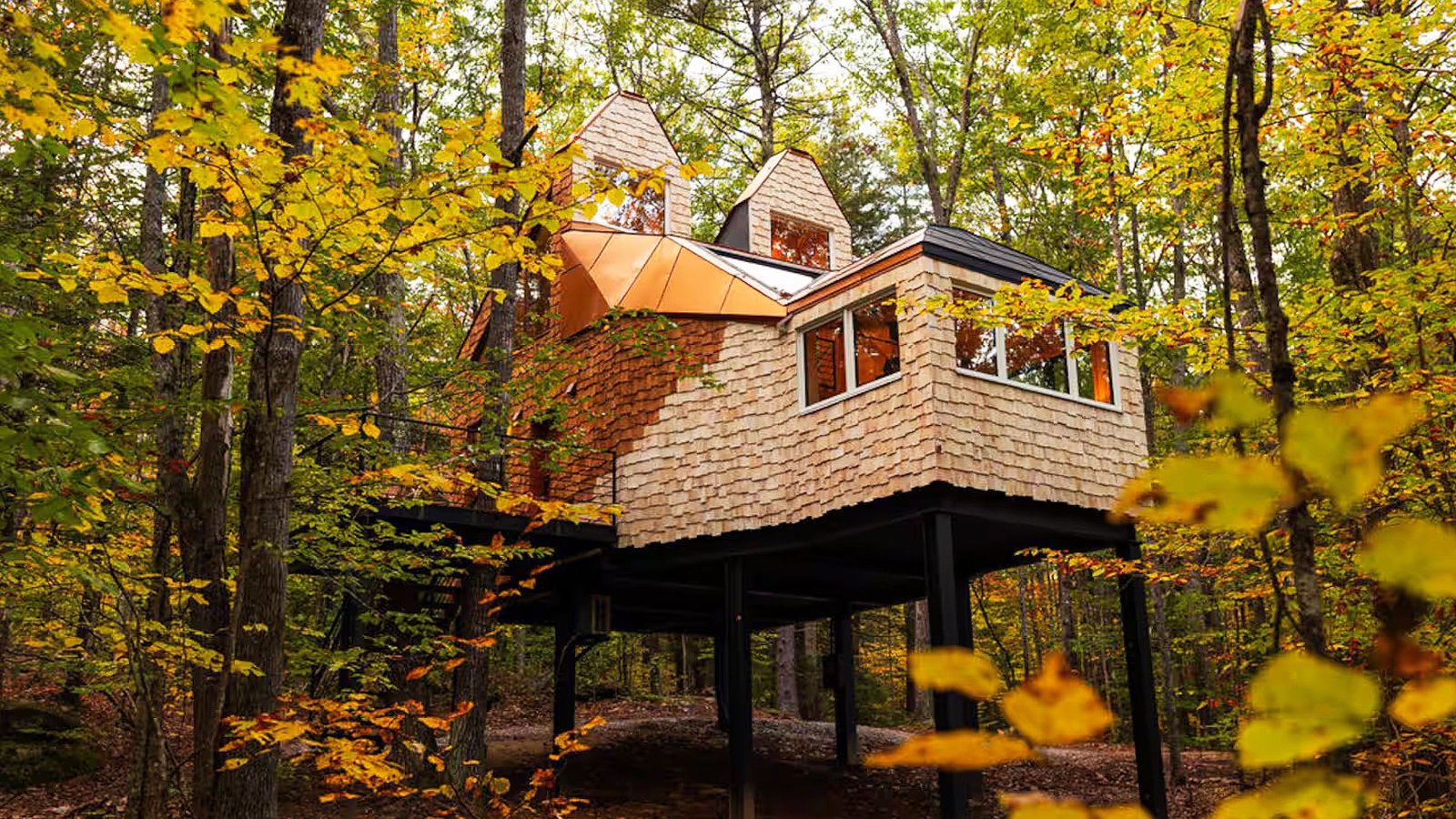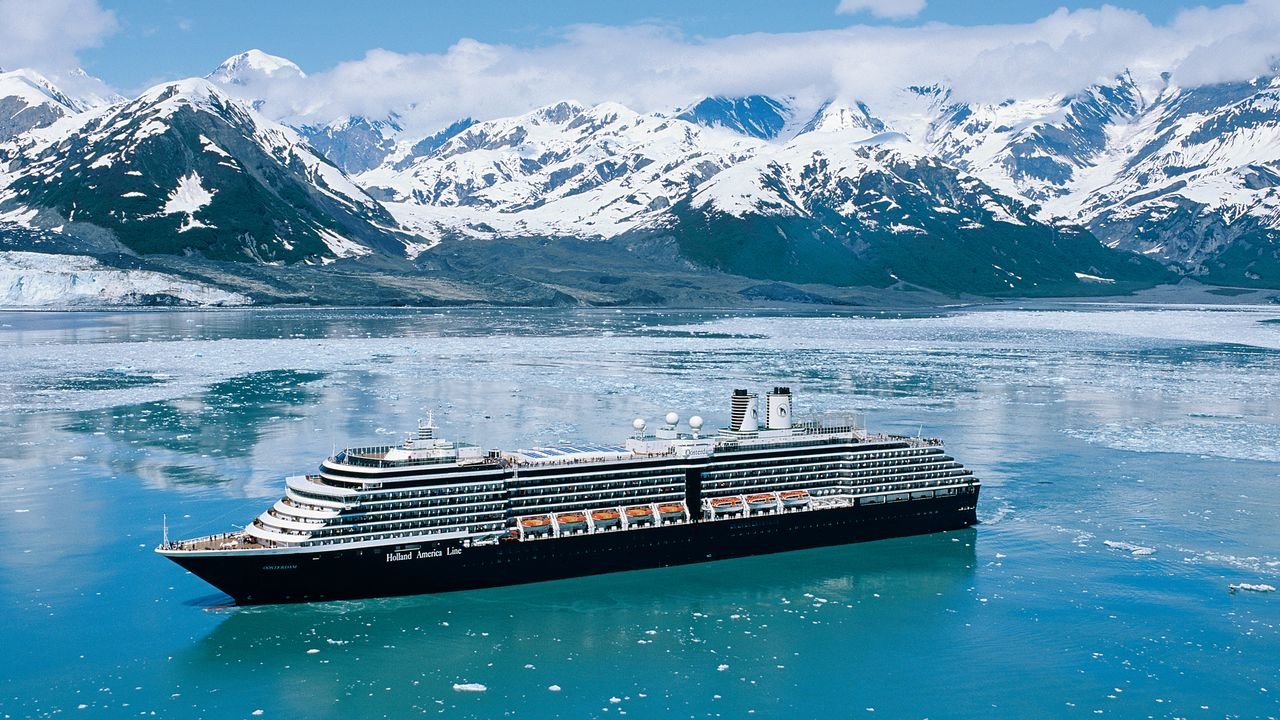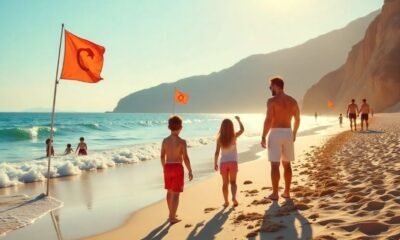Solo Travellers
Planning a solo trip? 9 safety rules you should know for a stress-free journey | Travel

Updated on: Jun 11, 2025 02:47 pm IST
Solo travel is fun but you can make it more secure with the help of key safety rules that keep your journey smooth and without any worry.
Solo Travellers
17 Best Airbnbs for Enjoying Fall Foliage, From Vermont to Colorado

Bed & bath: 4 bedrooms, 2 bathrooms
Top amenities: Hotel-grade Endy mattresses, sauna, wraparound deck and patio with a grill, parking for six-plus cars
Raw forest surrounds this super-size (sleeping 10 people) waterfront cabin in Ontario. Located 30 feet from the shore of Thirty Island Lake, fall guests get spectacular views of not only the dazzling canopy of gold, orange, and red leaves—but also their blurred, kaleidoscopic reflection on the water’s surface. And if you want even more of the beauty, you can take in these sights from the center of the lake itself—just hop in one of the watercrafts—a kayak, canoe, or stand-up paddleboard—from the private dock. Walk into the house, and you’ll quickly realize that despite the rustic setting, you won’t be roughing it. Hotel-worthy amenities abound: a completely stocked kitchen with an array of spices, a sauna, and Pendleton blankets in the bedrooms are just a few of them. (Take a look at our list of the best Airbnbs in Ontario within driving distance of Toronto for more options.)
Solo Travellers
The Best Time to Cruise Alaska 2024: A Month-by-Month Guide

April and May
If your schedule allows, not only does sailing Alaska in April and May afford the possibilities of glimpsing the Northern Lights and seeing wildlife emerge from their winter hibernation, it’s a more affordable and less crowded time to cruise, too. April and May are also the driest months in Alaska, so the chances of rain are slim.
Smaller ships like those that comprise Alaska Dream Cruises’ and UnCruise Adventures’ fleets can maneuver closer to the coastline for better views of bears rambling along the beaches and on-land excursions without another soul around. Alaska Dream Cruises added two new eight-day itineraries this season, both of which focus on remote wilderness, hiking, kayaking and wildlife viewing. UnCruise also has a new itinerary this year, a 10-night Aleutian Islands Adventure with Dutch Harbor and Kodiak itinerary.
June to August
Warmer temperatures, an average of 17 hours of daylight, and school vacations all make Alaska a popular destination for cruising in June, July, and August. Expect crowded ports and more ships out on the water, but that’s not to say it’s not a good time to set sail: bears are still active, as are whales and native bird life.
Oceania Cruises’ 1,250-guest Riviera sets sail to Alaska for the first time this season with itineraries ranging from 7 to 12 days through September, including a 10-day voyage roundtrip from Seattle. American Cruise Lines doubles its Alaskan offerings this year with five itineraries, including two new 16- and 19-day Alaska National Parks cruises. For a shorter option, check out the 9-Day Southeast Alaska Cruise, roundtrip from Juneau.
September
Not only is school back in session in September, which means fewer crowds at ports, but the chances of seeing the Northern Lights return, especially if combining your cruise with a land tour that takes you further north into Alaska. Fall is also mating season for wildlife, so expect to see some friskiness.
In partnership with Lindblad Expeditions, National Geographic Expeditions’ new 11-day Voyage to the Great Bear Rainforest travels from Ketchikan to Seattle with plenty of adventure in between, including seeking out the spirit bear (a subspecies of American black bear also known as a Kermode bear). Celebrity Cruises’ Celebrity Edge is sailing her second season in Alaska, offering seven-night Alaska Dawes Glacier itineraries in September, either roundtrip from Seattle, or one-way from Seattle to Vancouver, British Columbia. For a longer cruise-tour option, take a look at one of Princess Cruise Line’s new offerings highlighting the National Parks, like the National Parks Expedition that visits five parks over the course of 15 days.
October
The Alaska cruise season winds down in October, with only a few ships setting sail. Just as in April and May, you’ll likely have the water to yourself, and even fewer people in the ports you call upon. Along with cooler weather, you’ll also find lower fares that will please your bank account. Holland America Line, Princess Cruises, and Royal Caribbean International all sail in Alaska into the fall, but Norwegian Cruise Line is the last to set sail in the state with seven-day itineraries roundtrip from Seattle.
2026 and beyond
Though we’re in the midst of the 2025 sailing season, if you’re looking to plan ahead for 2026 and even 2027, there’s even more from which to choose. For example, in May 2026 Princess Cruises’ newest ship, Star Princess, will sail roundtrip from Seattle to the Inside Passage. And for the first time, family favorite Disney Cruise Line will have two ships in Alaska in 2026 when Disney Magic joins Disney Wonder to offers 35 seven-night itineraries over the summer. Holland America Line, which has sailed in Alaska for more than 75 years, is debuting its new 14-day Great Alaska Explorer in 2026. Itinerary highlights include Anchorage, Juneau, Ketchikan, Kodiak, Valdez, and Prince Rupert, not to mention Glacier Bay scenic cruising.
A handful of cruise lines are sailing to Alaska for the first time in 2026, with another making a return to the Far North. MSC Cruises embarks upon its inaugural Alaska cruise season in May 2026 when MSC Poesia sets sail on seven-night itineraries roundtrip from Seattle. Another newcomer is The Ritz-Carlton Yacht Collection with Luminara setting sail on seven- to 11-night itineraries, including the seven-night roundtrip voyage from Vancouver. And Virgin Voyages will embark upon seven- to 12-night itineraries aboard Brilliant Lady, like the Alaskan Glacier Blues & Coastal Views sailing. Azamara Cruises returns to Alaska when Azamara Pursuit sets out on its 10- and 11-night itineraries with new immersive cruise-tours for those who can linger longer.
Looking further ahead to 2027, Explora Journeys embarks on its first cruises in Alaska from Vancouver, Canada, on board Explora III. Her inaugural voyage will be an 11-night “Journey Through Untamed Landscapes & Coastal Treasures” in May.
Solo Travellers
In the Faroe Islands, Nature Rewards Patience
As the Faroes become increasingly popular with international travelers—a trickle of visitors has turned into more of a cascade in recent years, particularly since 2023—there is a greater need for creatively expanding infrastructure, while prioritizing the needs and lifestyle of locals. The Faroese are essentially asking themselves: How can we invite visitors into the home we love, without losing what we love about it?
I hoped to find out. In April, my husband and I flew into the airport on Vágar, the third-largest island, with a plan to drive to the Northern Isles before slowly making our way back through Eysturoy and Streymoy. It was a route that would allow us to also travel through those undersea tunnels, while also being conscious of the number of pricey tolls we’d rack up from using them. We hoped to also tap into the Faroese rhythm of daily life. What would it mean to take cues from the people who know these wild landscapes best?
On our first day, we beelined for the Visit North tourism office in Klaksvík, a small city of brightly colored houses on a spit of land between the open ocean and a sheltered bay of fishing boats. Reni Heimustovu, who staffs the front desk, smiled when we asked about hiking that day. “Last time someone wanted to go hiking in weather like this, we told them, ‘Choose life!’” she laughed knowingly. Outside, the long grass was blown flat on the surrounding mountains.
And so we learned our first lessons of traveling in the Faroes: One must always be adaptable.
We climbed back into the car, and ditched the hike, instead driving along a muddy road toward Klakkur Viewpoint, below which the sea yawned expansively. In scenic, rural parts of the islands, which describes just about everywhere in the Faroes, a source of tension with rising tourist numbers has come from the fact that visitors aren’t always prepared for sheep on the road. There are so many of the animals here, that in 2016, locals used their ovine population to map areas not yet canvassed by Google Maps’ cars; famously, the Faroes have more sheep than people, and their wavy wool provides a living for many locals. New signage on roads like these gently reminds visitors which grazing lands are off limits to hiking and sightseeing: the sheep have the right of way.
-

 Brand Stories2 weeks ago
Brand Stories2 weeks agoBloom Hotels: A Modern Vision of Hospitality Redefining Travel
-

 Brand Stories1 week ago
Brand Stories1 week agoCheQin.ai sets a new standard for hotel booking with its AI capabilities: empowering travellers to bargain, choose the best, and book with clarity.
-

 Destinations & Things To Do2 weeks ago
Destinations & Things To Do2 weeks agoUntouched Destinations: Stunning Hidden Gems You Must Visit
-

 Destinations & Things To Do1 week ago
Destinations & Things To Do1 week agoThis Hidden Beach in India Glows at Night-But Only in One Secret Season
-

 AI in Travel2 weeks ago
AI in Travel2 weeks agoAI Travel Revolution: Must-Have Guide to the Best Experience
-

 Brand Stories1 month ago
Brand Stories1 month agoVoice AI Startup ElevenLabs Plans to Add Hubs Around the World
-

 Brand Stories3 weeks ago
Brand Stories3 weeks agoHow Elon Musk’s rogue Grok chatbot became a cautionary AI tale
-

 Asia Travel Pulse1 month ago
Asia Travel Pulse1 month agoLooking For Adventure In Asia? Here Are 7 Epic Destinations You Need To Experience At Least Once – Zee News
-

 AI in Travel1 month ago
AI in Travel1 month ago‘Will AI take my job?’ A trip to a Beijing fortune-telling bar to see what lies ahead | China
-

 Brand Stories2 weeks ago
Brand Stories2 weeks agoContactless Hospitality: Why Remote Management Technology Is Key to Seamless Guest Experiences












